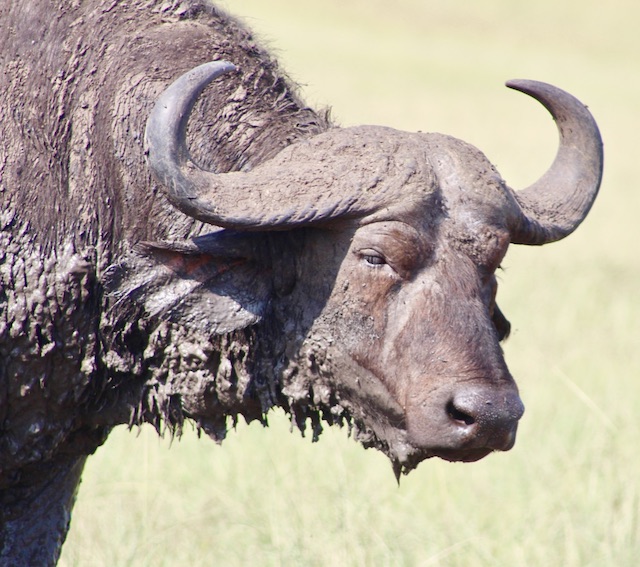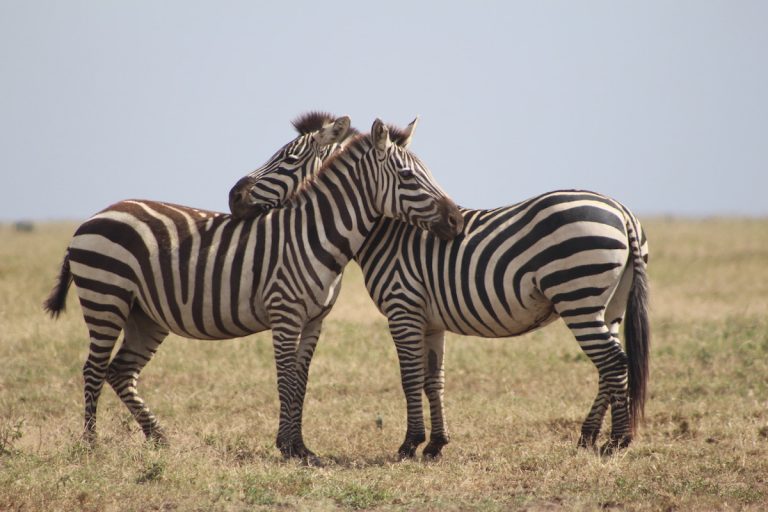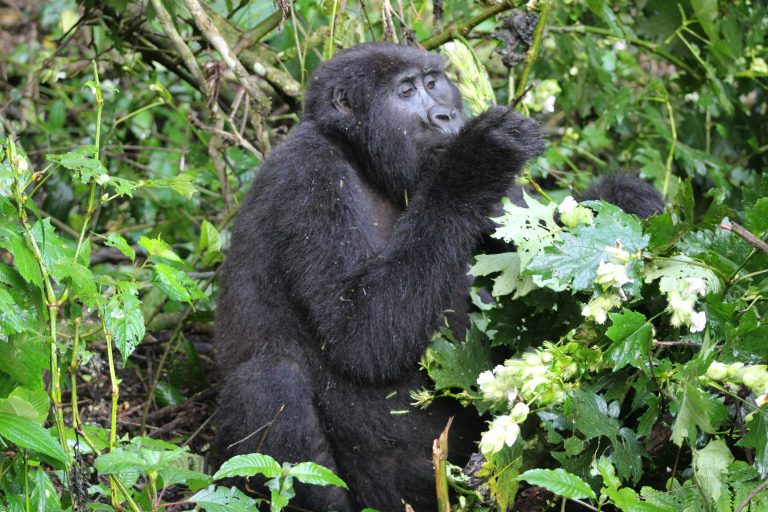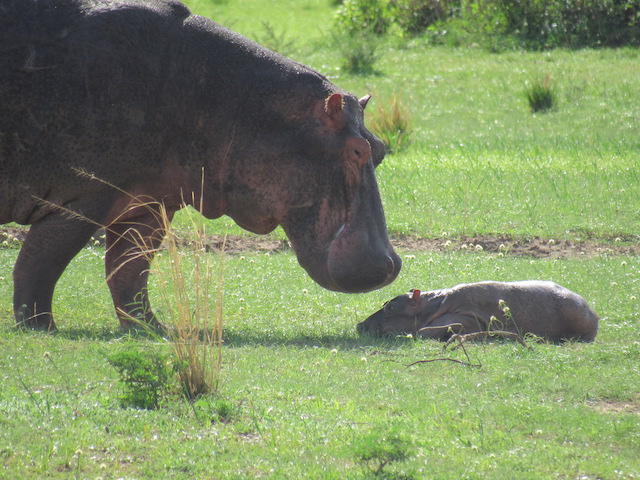Besides its National Parks, Forest Reserves, waterfalls, and Wildlife Reserves, Uganda boosts of numerous wetlands and swamps. Most of these have been listed as Wetlands of International Importance under the Ramsar Convention. Bird-life International, a global partnership of conservation organizations and the world leader in bird conservation, has designated these wetlands as Important Birding Areas for providing critical habitat for various endangered and threatened aquatic flora and fauna. Two of the Ramsar wetlands are located in National Parks, whereas the rest are located in the Lake Victoria region and north-eastern/eastern Uganda. Below are some of Uganda’s top Ramsar sites;
Ramsar Sites located in National Parks
The Murchison Falls – Albert Delta Wetland System
The Albert Delta Wetland System is located in Murchison Falls National Park. The wetland system stretches from the top of Murchison Falls to the delta where it meets Lake Albert. It contains a shallow area that is important for various aquatic bird species including herons, darters, and the shoebill, among others. The wetland is also a fantastic breeding and spawning site for indigenous fish species in Lake Albert fisheries. Interestingly, during the dry season, the area serves as a watering and feeding station for wildlife species.
The Lake Mburo – Nakivale Wetland System
Located in Lake Mburo National Park, Nakivale wetland is a system of open and wooded savanna, seasonal and permanent wetlands, and five lakes, with the largest being Lake Mburo. The system is a one-of-a-kind habitat that lies at the crossroads of two biological zones giving it a high level of biodiversity. The wetland is home to 22 species of Palaearctic and Afrotropical migrant birds during adverse weather conditions. It is home to the globally threatened Papyrus Yellow Warbler and Shoebill. It is also a habitat for two endangered cichlid fish species that have become extinct in the main lakes.
The Important Birding Area also has enormous socioeconomic value to the natives that live around it. It acts as a source of water for domestic use, livestock, as well as pasture for livestock.
Ramsar Sites located in Eastern & Northern Uganda
The Lake Bisina Wetland System
Lake Bisina is a freshwater lake in eastern Uganda. It is part of the Wetland lakes system situated between two predominantly dry lands, with Lake Opeta. The wetland lies about 15 kilometers from Kumi District on the Kumi-Soroti high road. Lake Bisina is endowed with a diverse range of flora and fauna, as well as a permanent source of fresh water for the local population. The wetland was designated a Ramsar World Heritage Site on September 15th, 2006.
Lake Bisina is a narrow and shallow body of water surrounded by a swamp that supports a large number of localized bird species. Some of these bird species include the legendary shoebill and rare papyrus Gonolek, pygmy goose, fox’s weaver, white-winged warbler, lesser Jacana, and white-backed duck, among others.
The wetland also harbors wild animals such as Nile Crocodiles and Hippos, though they are rarely seen. A range of fish species such as mudfish, tilapia, catfish, and lungfish are also found in the wetland.
The Lake Opeta Wetland System
Lake Opeta is a lake in Uganda with a large wetland system. The lake is located south of the Pian Upe Wildlife Reserve. And it serves as a dry-season refuge for both park wildlife and domestic cattle of the Karamojong and Pokot people. The lake and its surrounding swamps are located in eastern Uganda. The wetland system lies in the easternmost part of Lake Kyoga’s basin on a large floodplain between the Lake Bisina Ramsar Site. The Lake Opeta wetlands mark the southern end of the vast, arid Karamoja region, which stretches along Uganda’s eastern flank between Mount Elgon and Sudan.
The Lake Opeta Wetland System is one of Uganda’s 33 Important Bird Areas and has been a Ramsar-listed site since 2006. The Ramsar site is 1,050 meters above sea level and covers 68,913 hectares. It is home to more than 160 bird species including Uganda’s only endemic bird species, Fox’s weaver, and the rare shoebill, among others.
The Lake Nakuwa Wetland System
This is a permanent wetland connected to a number of satellite lakes and a swamp system in Eastern Uganda – Kaliro district. It is dominated by dense papyrus, with pools of floating papyrus interspersed throughout. The system and its satellite lakes are home to the most diverse cichlid species. It is also a haven for a number of non-cichlid species that are no longer found in the large lakes of Kyoga and Victoria. The system provides refuge to fish species that have been reported extinct in the country’s main lakes. Thanks to the protection provided by the aquatic vegetation that surrounds the lakes, which has prevented the spread of the Nile perch. The wetland also helps with flood control, water purification, and groundwater recharge.
Due to its remoteness and sparse population in the immediate catchment, the Lake Nakuwa Wetland system is likely one of Uganda’s last pristine wetland areas, and it employs a number of fishermen.
Ramsar Sites found on Lake Victoria
Mabamba Bay Wetland
Mabamba Bay wetland is an extensive marsh stretching through a narrow and long bay fringed with papyrus towards the main body of Lake Victoria. Located northeast of Entebbe, Mabamba is the only swamp near Kampala where the globally threatened Shoebill can be easily found. Furthermore, it is part of a wetland system that supports approximately 38% of the global population of the Blue Swallow, as well as the globally threatened Papyrus Yellow Warbler, among many other bird species.
The site also supports profitable fisheries activities and provides fish for domestic and commercial consumption. In addition, to raw materials for local crafts, building materials, and domestic and livestock water, among other purposes.
The Lutembe Bay Wetland System
This shallow area is located at the mouth of Lake Victoria’s Murchison Bay and is almost completely cut off from the main body of Lake Victoria by a C. papyrus island. The site is home to globally threatened bird species, endangered Cichlid fish, and over 100 butterfly species, including three rare ones. It is also a breeding ground for Clarias and lungfish, and it is home to more than 52% of the White-winged Black Tern population.
The Lutembe Bay wetland system further plays an important hydrological role, with the swamps surrounding Murchison Bay acting as natural filters for silt, sediments, and excess nutrients in surface run-off, and industrial wastewater, as well as the Kampala City sewage.
More Ramsar sites in Uganda include;
- Nabajjuzi Wetland System
- Lake Nabugabo
- Sango Bay-Musambwa Island
- Kagera Wetland System
- Lake George





